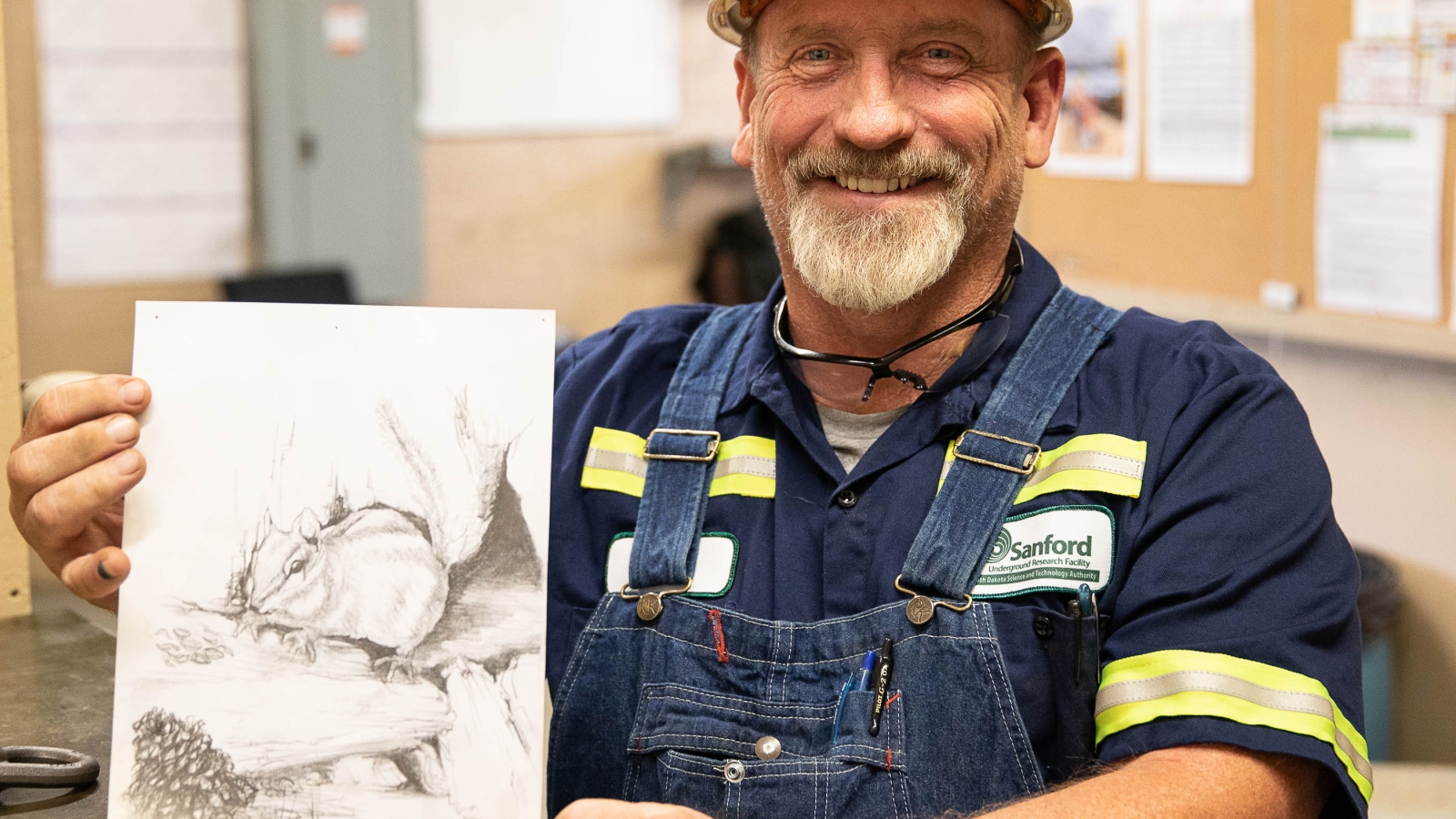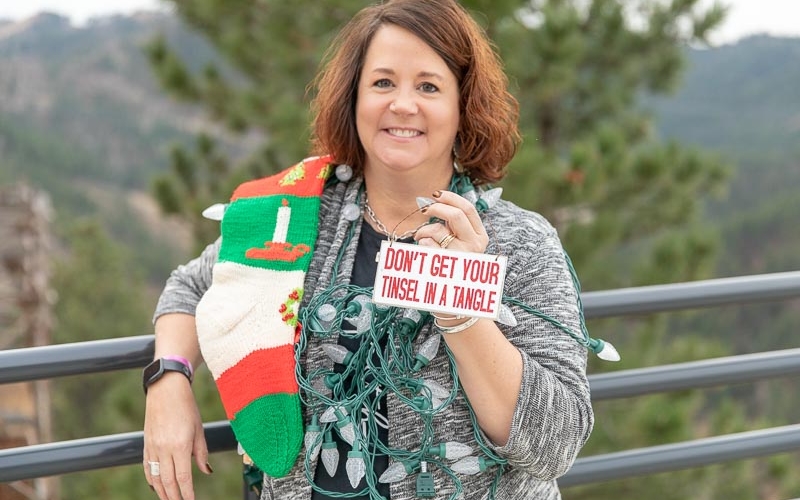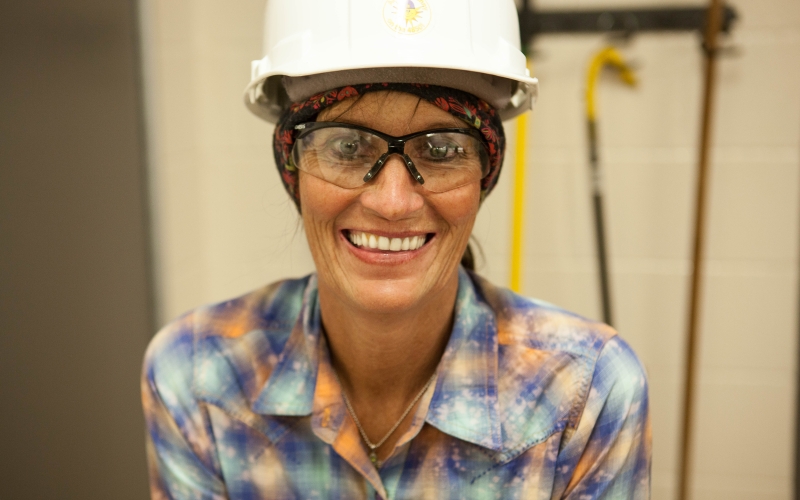
Dan James has worked for eight years at Sanford Lab, and for twenty-five years before that at Homestake Gold Mine. He was assigned to the Ross Shaft Rehabilitation Project when it began in 2012. Once the team hit the 2700 Level, he accepted a job on the surface. He said he's enjoying a new pace as a "top-lander" at Sanford Lab, "After thirty years on a jackleg, it’s a pretty nice change.”
After hours, James is an artist who works in many media. He recently completed two models of the Ross Shaft—one that depicts the original shaft; the other as the shaft will look after the rehabilitation is completed.The model of the original Ross Shaft is on display in the lobby of the Administrative Building at Sanford Lab.
We spent a few minutes with James to learn more about his life "after hours."
Q: What keeps you busy after you clock out?
A: There’s a lot to stay busy with. I have kids in their thirties, and I own an older house. There’s always something to work on of my own and kids who always have projects for me to do with them.
Mostly, though, I work on my artwork. I take a lot of wildlife photos, in order to make my work true to life. I need a reference point because, unfortunately, I don’t have a photographic memory. This year, I got a camera and have started learning about lenses. I’ve needed to get some pretty strong lenses, because the ordinary ones won’t reach as far as I need. When you’re after a squirrel or a buck, sometimes you’ve got to capture it from pretty far away.
Q: Where do you find your subjects?
A: Wherever I am in the hills. Whether I’m driving or walking or hiking, I’m on the lookout. If I’ve seen deer somewhere in the hills, I might go out there on a day off, set up at a distance and wait for them to come in. I’ve learned to be pretty nonchalant so I don’t scare them off.
Q: What is your favorite medium?
A: I really do it all. Watercolor is the least expensive, so I do a lot of that. Some acrylic, too. Oils are probably the best medium to work with, but it’s slow-drying, which is difficult. In every oil painting I did, from the time my kids were three until they were out of school, there was always somebody’s fingerprints in it—and they weren't mine. So I’ve have a difficult relationship with oils from the start.
I’ve also been getting in to photography, like I said, and I do a fair amount of woodworking.
Q: Tell me about the model of the Ross Shaft you completed.
A: That project has been in the works for quite a while. When we first began this project, they realized they needed a model for those who were unfamiliar with the shaft structure. They wanted to be able to point at something and say, ‘this is a wall plate, here is an end plate’ and so on. They wanted two models—one of how the shaft used to look, and how it was going to be.
Q: What other artwork has been inspired my Sanford Lab?
A: I have done some paintings of the headframe and the hills—I don’t mind doing buildings. Mostly, I’ve done some portraits of employees and their families. Most of those turn into gifts.
Living in this area, artists are a dime a dozen; this place is beautiful, so that’s how it happens. Being around it, creating every day, it just makes you better at what you do.
Q: How would your family describe your artwork?
A: Probably better than it is! They like to talk me up. I think I do a fair job. Everyone can learn to do it, I just had a natural knack for it. It’s like anything, the more you do it, the better you get. It doesn’t matter if it’s golf or painting or even running a jackleg. You pick up a jackleg for the first time it’s going to beat the tar out of you. By the time you’ve done it for 30 years, it’s not a big deal.
Q: What are you working on right now?
A: I’m getting ready to paint an antelope from the last trip coming across Wyoming. I’m still deciding on the medium.
Q: Do you have a vision for your artwork?
A: I’ve sold quite a bit of work, and I’ve started making prints. Something I would like to do along the line is donate some of the income off of the artwork to a foundation doing good, whether it be for kids with cancer or breast cancer. I’d like to see it go somewhere where it does good stuff. I’ve had a number of people in my family who have battled with breast cancer, and I could see the income going to solving that problem.

